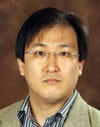 “Financial Reform and Southeast Asia:Analyzing Regional Long-term Trends and Corporate Finance” (Keisou Press, 2015)
“Financial Reform and Southeast Asia:Analyzing Regional Long-term Trends and Corporate Finance” (Keisou Press, 2015)
Fumiharu Mieno (Professor, Center for Southeast Asian Studies, Kyoto University)
I am really honored to receive Masayoshi Ohira Memorial Prize for my book, “Financial Reform and Southeast Asia”. I would like to express my sincere thanks to the board members of the foundation and the selection committee as well as all I indebted to in my academic life, in particular KeisoShobo that realized this publication.
My work depicts the fundamental relationship between economic development and financial system in Southeast Asia through two approaches: (1) observation of long run trend brought by my own work on constructing historical long-term statistics, (2) empirical analysis on corporate finance with firm level financial data. The primary purpose of the study is to reexamine the financial reforms conveyed in the region since the Asian Financial Crisis in 1997. Its major observation focuses are Thailand and Malaysia.
Main findings in my book are summarized as follows. In Southeast Asia, the linkage between financial sector and industrialization have remained sallow, partly caused by the fact that formation of financial sector preceded that of nation states and their policies to industrialize the economies. And the process of industrialization since 1980s largely shouldered by foreign direct investment enlarged this gap, resulting an insulated situation between financial and real sector.
The financial reform effort after the crisis has directed to improve and enrich fund supply channels with utilizing securities markets. For this direction, there exists a basic recognition that the Asian Financial Crisis caused from the unhealthy corporate financial situation characterized by excess debt finance, The book, however, points out that the real situation of corporate finance in Southeast Asia is far different from, and in even opposite nature of, this recognition. Then, one clear policy imprecation is derived in this book, that the financial reform should be designed in forms consistent to the structure of fund demand side, instead of supply side.
The arguments associated with financial system in economic development – in main stream economics, tend to be led to find a solo appropriate system for promoting economic growth, backed by the view to give the highest value on the protection of property right that is originated from Western Europe. The fundamental motivation of my case study on Southeast Asia is to challenge such main stream position, and to argue that financial systems are, at least partially, determined by real sector’s development pass, therefore they may be diversified by region.
I am indeed convinced that comparative study on economic systems – including financial system, collaborated with the knowledge of Asian or regional economic studies are crucially important to understanding the economy of Asia-Pacific region. With a deep gratitude to those encouraging the publication, and my study life in the long way toward it, I would continually deepen my work.
Profile
Fumiharu Mieno’s major research areas are financial system in economic development, the financial sector in Southeast Asia, and Southeast Asian economies particular on Thailand and Myanmar. His major publications are Economic Transition in Myanmar After 1988: Market Economy Versus State Control, (NUS Press, Singapore, 2009), Economic Development and Financial System in Asia (in Japanese, Toyo Keizai Shinposha, 2008), and “Fund Mobilization and Investment Behavior in Thai Manufacturing Firms in the Early 1990s.”, Asian Economic Journal, 20.1, 2006.
He obtained Bachelor of Social Study in 1992 and Ph.D. of Economics in 1999 both at Hitotsubashi University. Before attaching the current position, he worked as research associate at Hitotsubashi University, associate professor at Hosei University, and professor at Kobe University, He was also visiting faculties in Thammasat University (Thailand), and Columbia University (the U.S.).

